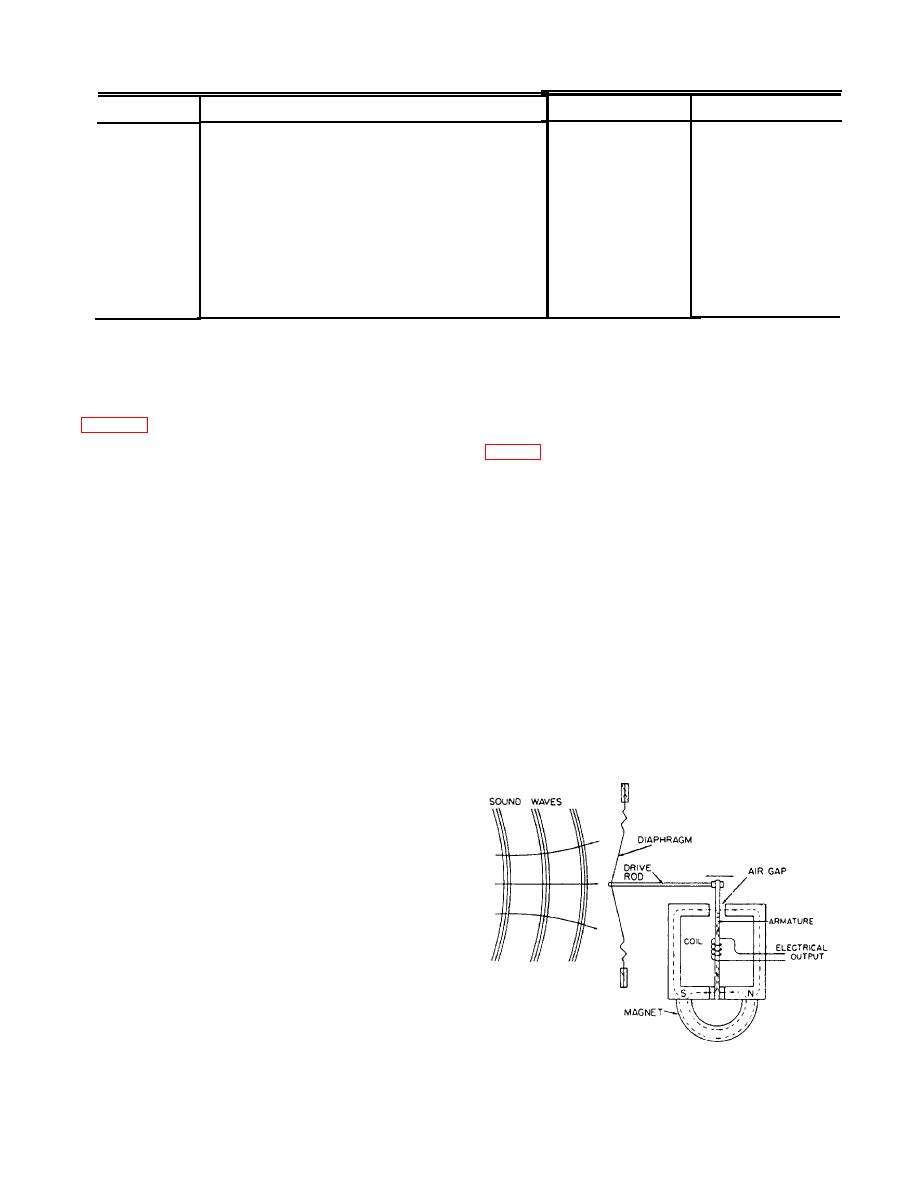 |
|||
|
Page Title:
Table 7-1.--Shipboard Announcing Systems - Cont'd |
|
||
| ||||||||||
|
|
 Table 7-1.--Shipboard Announcing Systems--Continued
Importance
Readiness Class
System
Circuit
Aircraft Maintenance and
51MC
2
SV
handling control
Unassigned
52MC
4
NV
Ship Administrative
53MC
NV
4
Repair officer's control
54MC
NV
4
55MC
Sonar Service
Unassigned
56MC
57MC
Unassigned
V
1
Hanger Deck Damage Control
58MC
3
SV
SAMID Alert
59MC
* - Central amplifier systems.
Each installed announcing system aboard ship is
Magnetic Microphone
assigned an IC circuit designation in the MC series.
The magnetic, or moving-armature, microphone
and the importance and readiness classification for each
circuit. These systems, however, are not all installed in
wire, inside of which is a small armature. Sound waves
any one ship.
impinging on the diaphragm cause the diaphragm to
In this chapter, we will discuss some of the more
vibrate. This vibration is transmitted through the drive
common systems that are installed on board ship today
rod to the armature, which vibrates in a magnetic field,
and the announcing equipment used with the systems.
thus changing the magnetic flux through the armature.
When the armature is in its normal position, midway
ANNOUNCING EQUIPMENT
between the two poles, the magnetic flux is established
All amplified voice systems consist basically of an
across the air gap with no resultant flux in the armature.
amplifier, a microphone, and a loudspeaker. The
microphone converts the sound energy into electrical
When a compression wave strikes the diaphragm,
energy having the same waveform as the sound energy.
the armature is deflected to the right. The flux path is
The output from the microphone is applied as a signal
directed from the north pole of the magnet across the
voltage to the amplifier. The output power from the
reduced gap at the upper right, down through the
amplifier has the same waveform as the sound energy
armature, and round to the south pole of the magnet.
that is applied to the microphone. The loudspeaker
reconverts the electrical energy from the amplifier into
sound energy at a higher volume level than the original
sound. In shipboard installations, many loudspeakers
are operated from the same amplifier. Each loudspeaker
produces sound having the same waveform as the
original sound applied to the microphone.
MICROPHONES
A microphone is a device that converts sound
energy into electrical energy. All types of microphones
have a metal diaphragm that responds to the vibrations
of the sound waves, and some means of changing this
mechanical vibration into corresponding electrical
signals. The most widely used microphones are the (1)
magnetic, (2) dynamic, (3) crystal, and (4) carbon types.
|
|
Privacy Statement - Press Release - Copyright Information. - Contact Us |